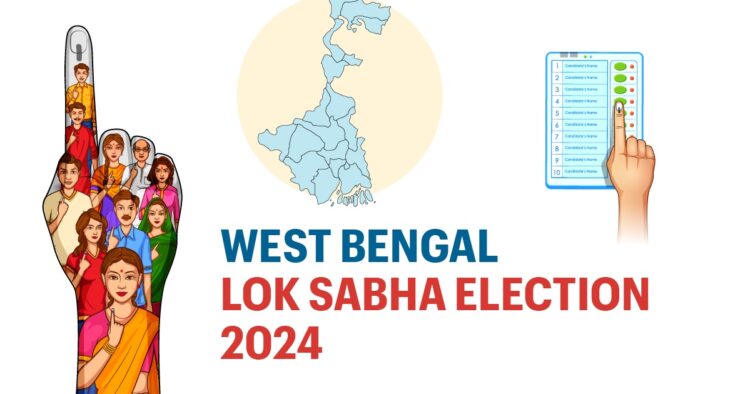The first phase of Bharat’s parliamentary election kicked off with a bang as West Bengal emerged as the front runner with a remarkable 77.57% voter turnout by 5 pm, as per the ECI’s latest data. This significant participation underscores the enthusiasm and commitment of the electorate towards shaping the country’s future through democratic means.
Following closely behind, Tripura registered a notable 76.10% voter turnout, while other states such as Arunachal Pradesh, Assam, Chhattisgarh, Jammu and Kashmir, Madhya Pradesh, Manipur, Meghalaya, Mizoram, Nagaland, Puducherry, and Sikkim reported varying percentages, reflecting the diverse engagement of citizens across regions.
However, some states lagged in voter participation, with Uttar Pradesh recording 57.54%, Tamil Nadu 62.08%, and Uttarakhand 53.56%. Bihar, Andaman and Nicobar Islands, Lakshadweep, Maharashtra, and Rajasthan also showed relatively lower turnout rates by 5 pm.
The Election Commission’s data revealed that voting is underway for 102 parliamentary seats in this phase, with the BJP-led National Democratic Alliance (NDA) and opposition parties in the INDIA bloc vying for supremacy. The NDA, seeking a third consecutive term under Prime Minister Narendra Modi’s leadership, faces a formidable challenge from the INDIA bloc in this high-stakes electoral battle.
This phase encompasses polling in 21 states and union territories, including Arunachal Pradesh, Assam, Bihar, Chhattisgarh, Madhya Pradesh, Maharashtra, Manipur, Meghalaya, Mizoram, Nagaland, Rajasthan, Sikkim, Tamil Nadu, Tripura, Uttar Pradesh, Uttarakhand, West Bengal, Andaman and Nicobar Islands, Jammu and Kashmir, Lakshadweep, and Puducherry.
Noting down, several states such as Tamil Nadu, Sikkim, Nagaland, Mizoram, Arunachal Pradesh, Lakshadweep, Puducherry, Meghalaya, Uttarakhand, and the Andaman and Nicobar Islands are completing their polling in a single phase. Conversely, Bihar, West Bengal, and Uttar Pradesh will witness voting across all seven phases, beginning from April 19.
The Election Commission announced the poll schedule on March 16, aligning with the nation’s democratic ethos to facilitate a fair and transparent electoral process. Alongside the Lok Sabha polls, by-elections will be conducted for 26 assembly constituencies, adding further complexity to the electoral landscape.
This mammoth electoral exercise spans seven phases, from April 19 to June 1, encompassing 543 parliamentary constituencies. The culmination of this democratic spectacle will be witnessed on June 4, with the announcement of the election results, determining the composition of the 18th Lok Sabha and shaping Bharat’s political trajectory for the coming years.















Comments